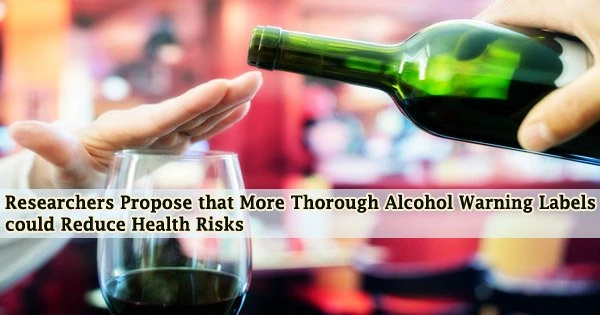You know drinking alcohol isn’t the best thing for your health, but just how bad is it?
After all, two thirds of persons in the US report using alcohol occasionally or occasionally. When we think of the health consequences of drinking, vehicle accidents are more likely to come to mind than cancer.
According to two academics with connections to the University of North Carolina at Chapel Hill, this is partly because the alcohol industry has repressed initiatives to inform consumers about drinking-related health hazards while promoting the notion that alcohol might be helpful to health.
In a New England Journal of Medicine perspective piece, co-authors Anna H. Grummon, PhD, and Marissa G. Hall, PhD, propose updating alcohol container warning labels as a strategy to help consumers make more informed decisions about how much they imbibe.
The U.S. Centers for Disease Control and Prevention released data in April 2022 revealing that alcohol use causes more than 140,000 deaths year, or more than 380 deaths every day.
Alcohol-related mortality increased by 25% in just the first year of the pandemic, which has been made worse by COVID-19. Even so, a recent national poll revealed that over 70% of American adults are unaware that even occasional or light drinking can raise cancer risk.
“Many people are unaware of the full range of risks from alcohol consumption,” said Grummon, the study’s lead author and a Gillings alum now a research scientist in the Department of Nutrition at Harvard University’s T.H. Chan School of Public Health.
“For example, there is now scientific consensus that alcohol increases the risk of several types of cancer, including head and neck cancer, breast cancer and colorectal cancer. But two-thirds of Americans are not aware of these risks.”
The current U.S. warning label hasn’t been updated in more than 30 years and largely goes unnoticed. Also, the warning says that alcohol ‘may cause health problems,’ a phrase so vague that it borders on being misleading. Given the mounting evidence about the harms caused by alcohol, the government has a duty to inform its citizens about these risks.
Marissa G. Hall
The mandatory warning labels on alcohol containers should be updated as one method of filling in these knowledge gaps. Such alerts are a low-cost, long-term public health tactic for enlightening people and promoting better habits.
For instance, warning labels are required on cigarette packets in more than 150 nations, and this regulation has helped to significantly lower smoking rates over the past few decades.
The most effective warnings labels, according to prior study, are those that are prominently displayed on the front of the packaging, incorporate visual components like photographs or illustrations, and come in a range of rotating patterns to prevent getting “stale” to customers.
The alcohol warning currently used in the U.S. has none of these elements and was written when there was far less evidence about the harms associated with alcohol consumption.
“The current U.S. warning label hasn’t been updated in more than 30 years and largely goes unnoticed,” said Hall, the study’s senior author and an assistant professor in the Gillings School’s Department of Health Behavior. (She is also a member of the Lineberger Comprehensive Cancer Center and a faculty fellow at the Carolina Population Center.)
“Also, the warning says that alcohol ‘may cause health problems,’ a phrase so vague that it borders on being misleading. Given the mounting evidence about the harms caused by alcohol, the government has a duty to inform its citizens about these risks.”
The warning label strategy has strong precedent: Remember those two thirds of American adults most of us! who were unaware alcohol has ties with cancer?
According to research, two thirds of Americans are in favor of requiring new, more detailed health warning labels on alcohol goods.





